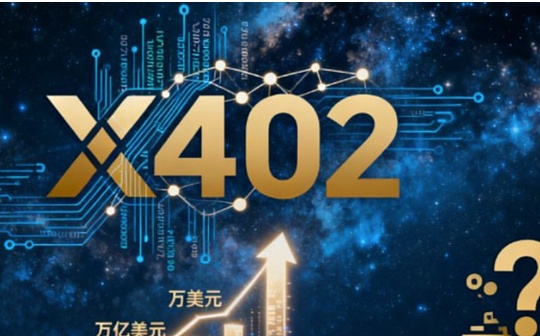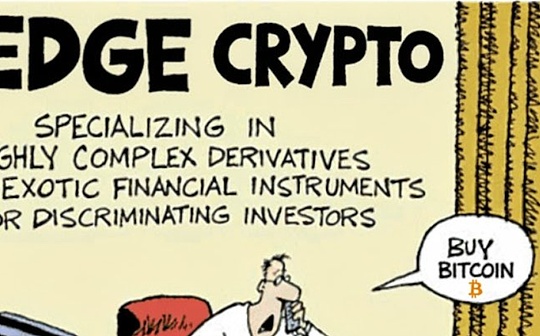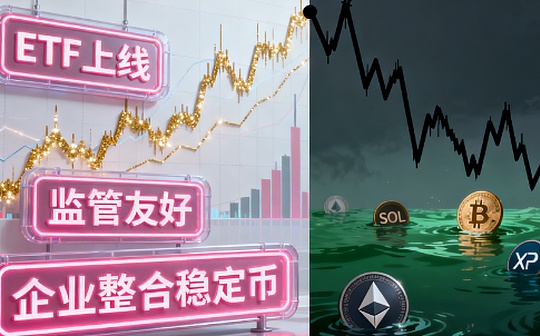
Author: Dilip Kumar Patairya Source: cointelegraph Translation: Shan Oppa, Bitchain Vision
Top 10 fastest growing blockchains in 2025, ranking by active users
The top blockchains in 2025, from DeFi stars to game chains, have a wide range of active users.Despite significant growth, these blockchains are facing fierce competition.
Core points
-
The growth of blockchain in 2025 depends on actual use and technology upgrades, not speculation or hype.
-
As measured by wallet addressActive usersIt is a key indicator.
-
Adoption of DeFi, NFT ecosystem and stablecoin is attracting millions of new users.
-
Partnerships with mainstream platforms and institutional inflows through Bitcoin ETFs are accelerating adoption.
-
The network still faces challenges such as inflated indicators, scalability trade-offs, regulatory pressures and L1-L2 competition.
The blockchain industry is developing rapidly, with new networks emerging constantly, competing with established leaders.But are these platforms really gaining widespread use?
In 2025, blockchain growth is driven by real user engagement and innovative technologies, not just speculation.From the basicsLayer 1 (L1) blockchainTo be efficientLayer 2 (L2) solution, major networks are competing to use low-cost transactions, seamless integration with mainstream platforms, and the booming decentralized finance (DeFi)andThe non-fungible token (NFT) ecosystem to attract millions of users.
Based on the growth of active users, this article ranks the top ten fastest growing blockchains in 2025.
Ranking criteria
Our ranking of the top 10 fastest growing blockchains in 2025 is mainly based on the number of active users.Each entry also highlights whether the network is layer 1 (L1) or layer 2 (L2), supporting its riseindex, the main behind its growthDriversAnd what it faceschallenge.
For beginners, the L1 blockchain provides an infrastructure with native consensus mechanisms, while the L2 solution is designed to enhance the scalability of the L1 blockchain and reduce its costs.For example,EthereumIt is the L1 blockchain, andPolygonIt’s L2.
“Active user” means that a transaction has been completedSeparate wallet address.
Fully diluted valuation (FDV) is the theoretical total market value of cryptocurrencies, assuming that all tokens are circulating at the current price.This indicator provides a broader perspective on the potential value of the project.It also helps determine whether the token is overvalued or too low relative to its total potential supply.
Top 10 fastest growing blockchains
1. Solana
Solana is a high-speed L1 blockchain that uses Proof of History (PoH)Consensus mechanism, designed for scalableDesigned for decentralized applications (DApps) and market.
-
Monthly active users: 57 million
-
FDV: $107.2 million
-
Token trading volume (30 days): US$284.2 billion
-
Key drivers: Solana’s growth is due to DeFi, NFT, meme coinsHigh frequency tradingThe surge, Firedancer validator clients improve reliability, and increased institutional adoption.
-
challenge: Past network outages affected reliability.Other challenges include criticism about the extent of centralization and competition from L2 solutions.

Do you know?Solana’s history proves that it can handle thousands of transactions per second, powering DeFi, NFT and even meme coins at lightning speeds.
2. Near Protocol
Near Protocol is an L1 blockchain that uses threshold proof of stake (TPoS) consensus.It focuses on scalability, developer-friendly tools, and integrating AI native capabilities for decentralized applications.
-
Monthly active address: 51.2 million
-
FDV: $3.1 million
-
Token trading volume (30 days): USD 7.8 million
-
Key drivers: Integrate AI for user-owned agents and intents, low transaction fees and carbon neutrality, collaborate with EigenLayer and others for rapid finality, and ecosystem expansion in the DeFi and gaming sectors.
-
challenge: Competition from faster L1s and L2s, price fluctuations despite user growth, andShardingPotential vulnerabilities in complexity.

Do you know?Near Protocol features carbon neutrality and low fees.It shows strong momentum despite facing competition from faster chains.
3. BNB Chain
BNB Chain is a Binance-powered L1 blockchain that supports DeFi, NFT and DApps through Ethereum Virtual Machine (EVM) compatibility.
-
Monthly active address: 46.4 million
-
FDV: $121.2 billion
-
Token trading volume (30 days): USD 56.1 billion
-
Key drivers: The blocking time is reduced to 0.75 seconds, integrating AI for data ownership.
-
challenge: Centralized concerns arising from Binance’s support, regulatory scrutiny.

4. Base
Base is an Ethereum L2 blockchain developed by Coinbase.Using Optimistic Rollups, focusing on low-cost DeFi, consumer applications and seamless integration.
-
Monthly active address: 21.5 million
-
FDV: $2.92 billion
-
Key drivers: Ultra-low fees (average $0.01), Coinbase has a user base of over 100 million to attract new users, stablecoin flows and cooperation for consumer DApps.
-
challenge: caused by high activityNetwork congestion, reliance on Ethereum security and regulatory compliance issues as an emerging ecosystem.

5. Tron
Tron is a high-throughput L1 blockchain focused on decentralized content sharing and integrated with Telegram, emphasizing low-cost stablecoin transactions.
-
Monthly active address: 14.4 million
-
FDV: $33.5 billion
-
Token trading volume (30 days): US$51.7 billion
-
Key drivers: Negligible transaction fees, AI and cross-chain integration, and collaborations with Rumble Cloud, among others.
-
challenge: Regulatory review, centralized risk.

6. Bitcoin
Bitcoin is usedProof of Work (PoW)The original decentralized cryptocurrency of consensus.It is used as digital gold forStore of valueand pay.
-
Monthly active address: 10.8 million
-
FDV: $2.3 trillion
-
Token trading volume (30 days): $1.3 trillion
-
Key drivers:passExchange Traded Funds (ETFs)Inflow of institutional funds.(As of the fourth quarter of 2024, more than $100 million of professional investors were managed to hold $27.4 billion worth of Bitcoin ETFs.) Due toHalfThe reduced supply due to events andAs a strategic reserveadoption.
-
challenge: High energy consumption; volatility affected by macroeconomic factors.

7. Aptos
Aptos is an L1 blockchain developed by former Meta engineers in the Move language, emphasizing scalability, DeFi and developer growth to support DApps.
-
Monthly active address: 10 million
-
FDV: $5.3 billion
-
Token trading volume (30 days): USD 13 billion
-
Key drivers: Peak 19,200 TPS; Move language for security contracts; Partnerships such as USDt in partnership with Tether.
-
challenge: More wider adoption and competition from old-established L1s are needed.

8. Ethereum
Ethereum is a leading smart contract, DeFi and NFT L1 blockchain with a huge developer ecosystem and a consensus on using Proof of Stake (PoS).
-
Monthly active address: 9.6 million
-
FDV: $522.7 billion
-
Token trading volume (30 days): $1.1 trillion
-
Key drivers: Pectra upgrades to improve user experience and scalability,ETF Fund inflowsand institutions pledge.
-
challenge: Scalability issues, higher fees and regulatory pressures than competitors.

9. Polygon
Polygon provides Ethereum with a multi-chain expansion solution using PoS, supporting DeFi, NFT and enterprise applications through EVM compatibility.
-
Monthly active address: 7.2 million
-
FDV: $2.6 billion
-
Token trading volume (30 days): US$4.2 billion
-
Key drivers: Upgrades like Heimdall v2 for interoperability, as well as collaboration with Fortune 500 companies.
-
challenge: Regulatory scrutiny under the Crypto Asset Market (MiCA), and competition from other L2s.

Do you know?Polygon’s Heimdall v2 upgrade enhances inter-chain interoperability and consolidates Polygon’s role as a multi-chain expansion center in the web3 world.
10. Arbitrum One
Arbitrum One is a leading Ethereum L2 that uses Optimistic Rollups for faster and cheaper transactions while inheriting Ethereum’s security.
-
Monthly active address: 4 million
-
FDV: $5.1 billion
-
Token trading volume (30 days): USD 14.3 billion
-
Key drivers: Integrate with Robinhood and others to enable tokenized assets, and upgrades such as Stylus to reduce fees.
-
challenge: Reliance on the Ethereum mainnet, regulatory uncertainty and competition from Optimism.

Trends driving blockchain growth
The 2025 blockchain story is about acceleration.New technologies and mainstream acceptance are driving growth in the basic L1 layer and the expansion L2 layer.Commonly significant trends include:
-
Stablecoin adoption drives volume growth:USDT and USDCStablecoins are significantly increasing trading activity.This enhances liquidity and user engagement across ecosystems.
-
Layer 2 solutions enhance scalability and reduce costs: Scaling solutions like Arbitrum One and Base improve Ethereum’s ability to process transactions and reduce fees to as low as $0.01 per transaction.This makes DApps more affordable and accessible.
-
DeFi and NFT ecosystems attract new users: The DeFi protocol and NFT market is attracting millions of new users.GMX and Polygon on Arbitrum provide innovative tools for financial and digital collectibles, including services such as $227 million in the first quarter of 2025.
-
Integration with mainstream platforms: Blockchain is growing through integration with mainstream platforms.For example, Base is built into Coinbase, allowing it to reach more than 100 million potential users.
-
Institutional interests and cooperation: Growing institutional participation is making blockchain more legitimized.In 2024, Bitcoin ETF received $36.4 billion inflows.With blockchain networkCorporate cooperationIt also helps to enhance the credibility of blockchain.For example, Starbucks has partnered with Microsoft and its blockchain network Azure to create a traceability system.
User growth, challenges and future paths
The rapid growth of active blockchain users in the top ten in 2025 highlights the increasing role of decentralized technology.Networks like Solana and Arbitrum are leading this adoption with low-cost transactions, DeFi applications and mainstream integration.
However, key challenges remain:
-
Inflated indicators: Robot activity and inactive addresses may exaggerate real user growth.
-
Scalability vs. Decentralization: Some high-speed networks have made compromises in decentralization.
-
Regulatory uncertainty: The review of stablecoins and illegal activities poses risks of adoption.
-
Market competition: There is fierce competition between L1 chain and Ethereum L2 solutions.
In response, blockchain is innovating with unique products such as better robot detection, improved scaling solutions, regulatory compliance, and AI and asset tokenization.These efforts are crucial to sustain long-term growth and shaping the future of ecosystems.








